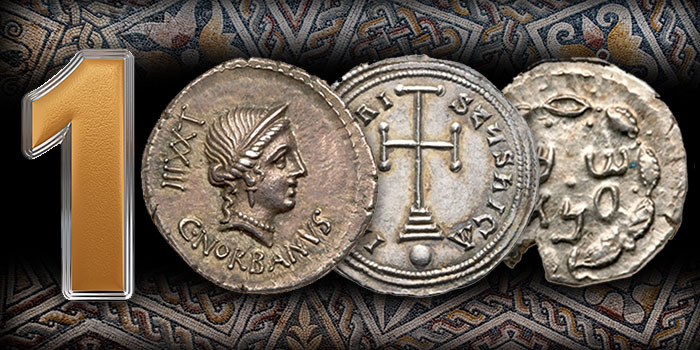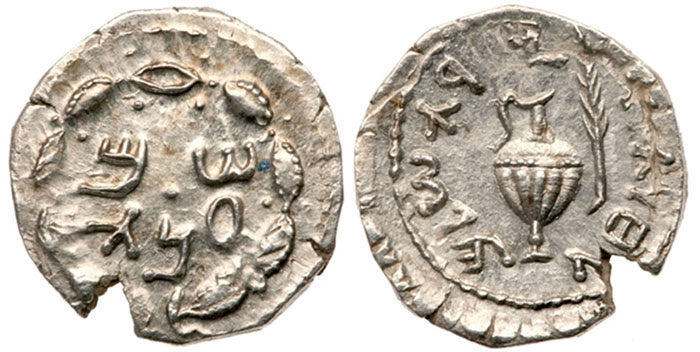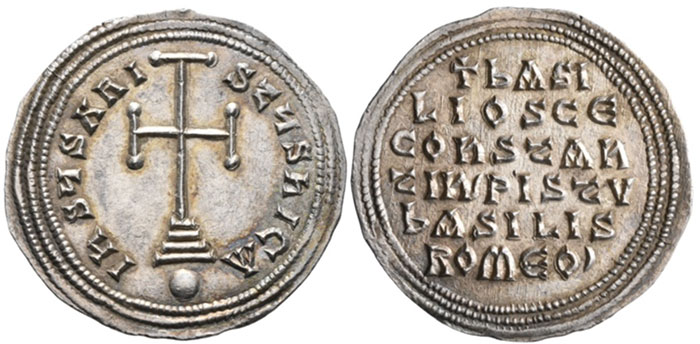
By Tyler Rossi for CoinWeek …..
As a collector, you have many different options when deciding on your collecting strategy. And while everyone starts in a different place, most run into the two main questions of quality or price. But it is important to realize that there are no correct answers to these questions, and everyone tailors their collection to their own personal tastes and is free to change at any time. Some numismatists like to collect bulk coins and even extremely low-grade “slicks” that are practically unidentifiable. The other main segment of numismatists is drawn to quality over quantity and is less daunted by high price tags.
Yet regardless of your collecting style, it is vital to plan out a coin budget to prevent overspending.
After writing up your budget for the year, you might then decide to add a high-grade ancient silver coin to your collection and set aside $1,000 for the purchase. But of the literal millions of ancient coins, which one should you choose? Greek? Roman? Eastern? Here are six high-grade yet relatively common coins that recently sold for less than $1,000 USD that most collectors could find in online auctions or larger coin shows.
Posthumous Tetradrachm of Alexander III “the Great”

Struck from 323 BCE until circa 275 BCE, the so-called posthumous tetradrachmai of Alexander III “The Great” are some of the most ubiquitous silver coins of the ancient world. Minted by the great conqueror’s successors, the diadochi, these coins changed over time yet they retained most of the original imagery. The obverse depicts a bold and forceful bust of Alexander as Heracles wearing a lion skin headdress and a seated Zeus on the reverse.
This example, struck in the ancient Thracian city of Odessos, the modern-day Bulgarian city of Varna on the Black Sea, depicts the artistry of these coins. While many posthumous Alexander III tetradrachms in average condition can cost approximately $175-250, this mint-state example was auctioned for 500 euro in 2017 by the Cayón Numismática auction house. Well-centered with a strong strike, this example is highly desirable and one of comparable quality would be welcome in any numismatists collection.
Drachm of Rhodes

Rhodes, one of the most famous ancient Greek city-states, was located on the large eponymous island next to the southwestern-most corner of modern-day Turkey. A famously independent-minded trading culture, the Rhodesians were famous for building one of the seven wonders of the ancient world, the Colossus of Rhodes, a massive 33-meter-tall statue of their patron god Helios. Like many other Greek city-states, Rhodes included an alliterative image on its coinage to represent its city and to make its coinage more recognizable. Athens included an owl, Aegina a sea turtle, and Rhodes a rose. While Rhodesian drachmai and di-drachmai are far from uncommon, they are generally of high artistic quality.
This near-Mint State drachma from Rhodes has been placed in the upcoming Roma Numismatics auction (e-sale 80) with an estimate of 400 GBP (about $555 USD). Featuring the famous rose on the reverse and the standard three-quarters, right-facing radiate head of Helios, this example shows the artistic skills of the ancient Greek artists responsible for engraving the city’s coin dies. This portrait style is especially hard to perfect with any real anatomical correctness, and thus this coin demonstrates a significant level of artistic mastery.
Roman Republican Denarius

The Roman Republic, one of the most famous and explosive societies in ancient history.
In under two hundred years, Rome went from a small city-state fighting wars against its neighbors within a day’s walk of the city to the sole superpower in the Mediterranean. While this example was minted in 83 BCE by the moneyer C. Norbanus, this denomination was first struck after the Second Punic War when Rome gained access to the major Carthaginian silver mines. In poor condition, a standard Republican denarius will cost anywhere from $75-100. However, this appealingly toned, Mint State ancient silver coin depicting the diademed head of Venus on the obverse control-numeral with an ear of wheat, a fasces with ax and a caduceus on the reverse realized a hammer price of $525 in the 117th Ira & Larry Goldberg Coins & Collectibles auction.
At their most artistic, Republican denarii should absolutely be considered artistic masterpieces. This example falls solidly within the middle of the pack, with lots of eye appeal and well-struck devices on both sides. Although the imagery is highly symbolic, it is not quite the zenith of Roman coinage artistry nor historical importance. The most artistic and historically important types can set back a numismatist well over $1,000. However, like this example, it is still very easy to acquire a highly appealing Republican denarius on a relatively realistic budget for many numismatists.
Celtic Stater

By 200 BCE, most of Europe was settled by people of Celtic ethnic and tribal affiliations. Included in this rapid expansion are the modern-day UK, France, Germany, most of eastern Europe, and the Balkans (except for Greece). These tribal peoples shared several major cultural markers despite their geographic separation. One of the main ones was their relatively new coinage, at least compared to most of the traditionally “civilized” cultures. Many Celtic coins were either derivations, meaning copies, of existing Greek and Roman coins or highly abstracted pieces of art. Perhaps the most famous examples of Celtic coinage are the golden staters struck for hundreds of years by various tribes. When these gold pieces are in high states of preservation, they can cost thousands of dollars. This price tag, unfortunately, places them out of reach for the majority of collectors and numismatists.
Fortunately, Celtic silver is generally more affordable. Struck circa 100-50 BCE by the Coriosolites, a Celtic tribe in Northwest Gaul (Modern France), this silver stater is in very fine to near uncirculated condition. The hammer price of 260 CHF (about $280 USD), in the 16th Web Auction by Leu Numismatik AG, is quite respectable. Actual Mint State examples would of course cost more; however, they would still fall well below the $1,000 ceiling of this list.
Celtic coins are unfortunately all too often overlooked by collectors and are as a result generally under-valued. This can enable astute collectors to acquire highly artistic and well-preserved examples for their collections.
Bar Kokhba Revolt Zuz

Also called the Third Jewish–Roman War or the Third Jewish Revolt, the Bar Kokhba Revolt erupted in 132 CE as a result of the persecution of the Jewish people by Rome and the myriad unresolved issues remaining from the Second Jewish-Roman War 62 years earlier. This military and civilian uprising, led by the Jewish military leader Simon Bar Kokhba, was crushed by the Roman emperor Hadrian. This crushing defeat of the Jewish peoples for a third time in less than a century resulted in the deaths of hundreds of thousands, widespread destruction of the Judean province, and another massive wave of displaced Jews who constituted the Diaspora.
This silver Zuz, while undated, is attributed to the third year of fighting (134/5 CE). One Zuz was equal to one drachma and four made one shekel. On the obverse of this example is written “Simon”, in Paleo-Hebrew, within a wreath of almonds. On the reverse is included the legend “For the freedom of Jerusalem” and a fluted jug and a willow branch.
While perhaps not the most visually appealing ancient silver coin, this Zuz pays witness to an incredibly historical event, and with a $700 price tag, is affordable for many collectors. It does come up for sale often, so an interested collector must watch the major online auctions carefully in case one is listed.
Basil I Miliaresion

Inspired by the silver Islamic dirham, the Byzantine miliaresion went through many iterations. Initially struck as a special issue on the crowing of a co-emperor, it slowly became a regular issue.
This type, struck in Constantinopolis circa 868-879 CE by Basil I “the Macedonian”, is one of the early types. This can be ascertained because it does not have the Christ figure or imperial portrait on either side. This particular example realized a hammer price of 750 CHF (about $808 USD) in the 2020 Leu Numismatic AG Auction #7. Examples in worse grades can be found for as little as $150-200. However, because of the religious imagery, the later issues with the Christ Figure can cost as little as $100 and upwards of many thousands of dollars.
While these six coins are fascinating, it is important to remember that they are only a limited sample of affordable ancient silver coins. I chose these three because of their historical context and sheer eye appeal. As a writer, one of my main goals is to de-mystify ancient numismatics and educate the average collector to the joys of collecting these historic pieces. Low-grade late Roman bronze coins can cost as little as $5; a bronze Byzantine follis, $30; or a silver Persian siglos, 45$.
So when you attend your local/regional coin show or are in a used book store, I hope your eyes, just like mine, are drawn towards the ancients.
* * *
Sources
https://www.ngccoin.com/news/article/2350/Tetradrachms-of-Alexander-the-Great/
https://www.ancient.eu/Rhodes/
* * *
About the Author
Tyler Rossi is currently a graduate student at Brandeis University’s Heller School of Social Policy and Management and studies Sustainable International Development and Conflict Resolution. Before graduating from American University in Washington D.C., he worked for Save the Children creating and running international development projects. Recently, Tyler returned to the US from living abroad in the Republic of North Macedonia, where he served as a Peace Corps volunteer for three years. Tyler is an avid numismatist and for over a decade has cultivated a deep interest in pre-modern and ancient coinage from around the world. He is a member of the American Numismatic Association (ANA).





Soy coleccionista , principiante, de monedas del imperio romano. Me resultó útil el artículo. Desde Argentina,muchas gracias por compartirlo.